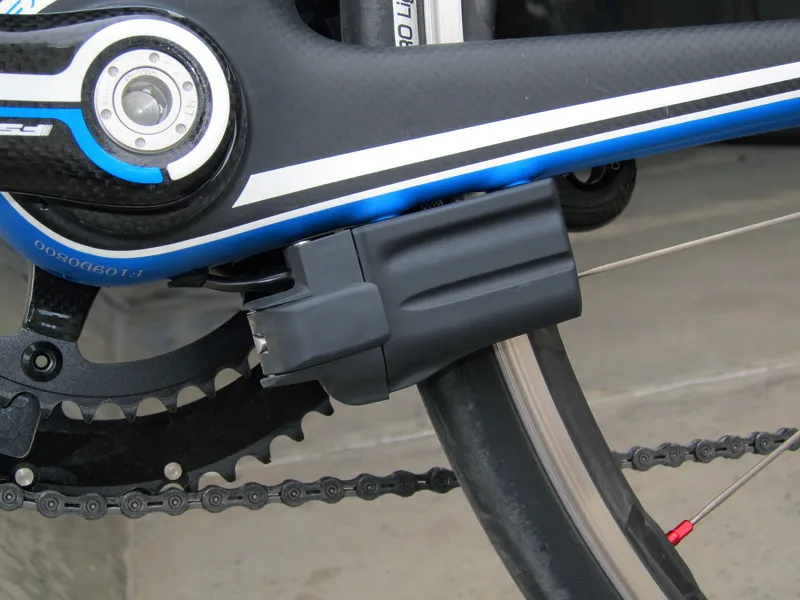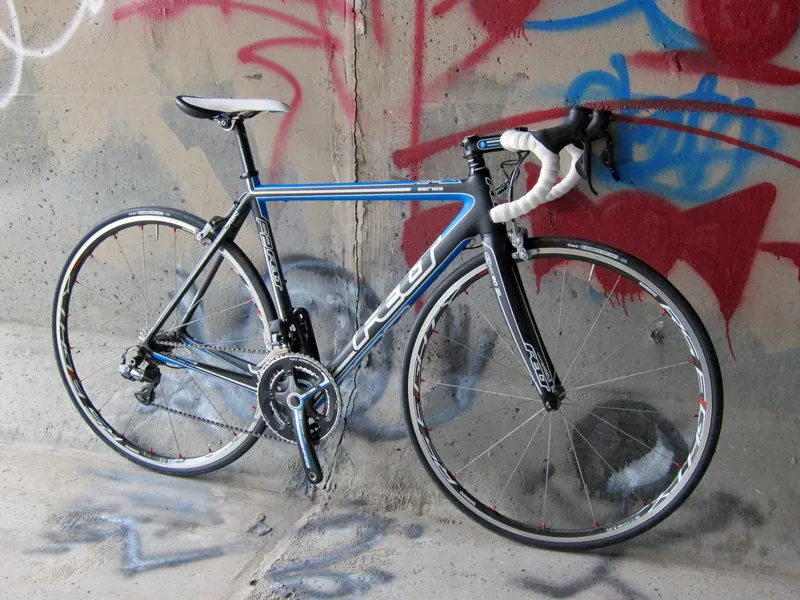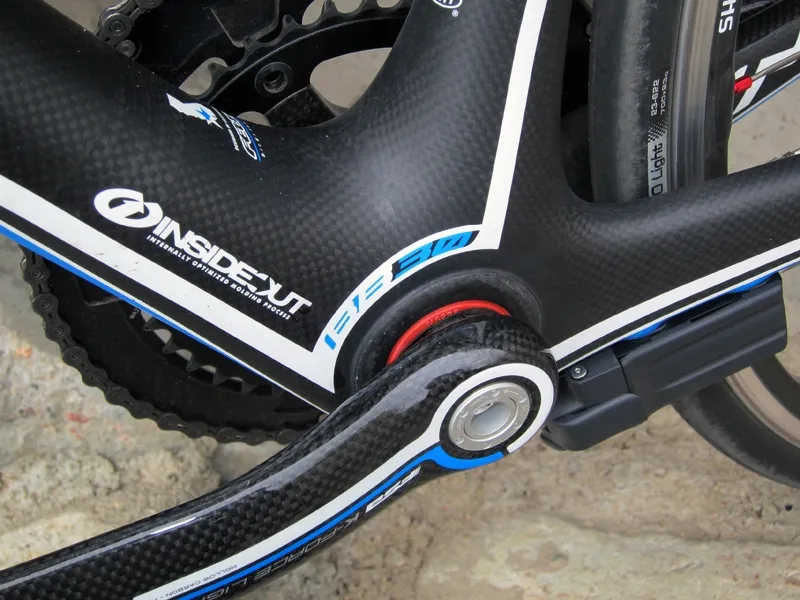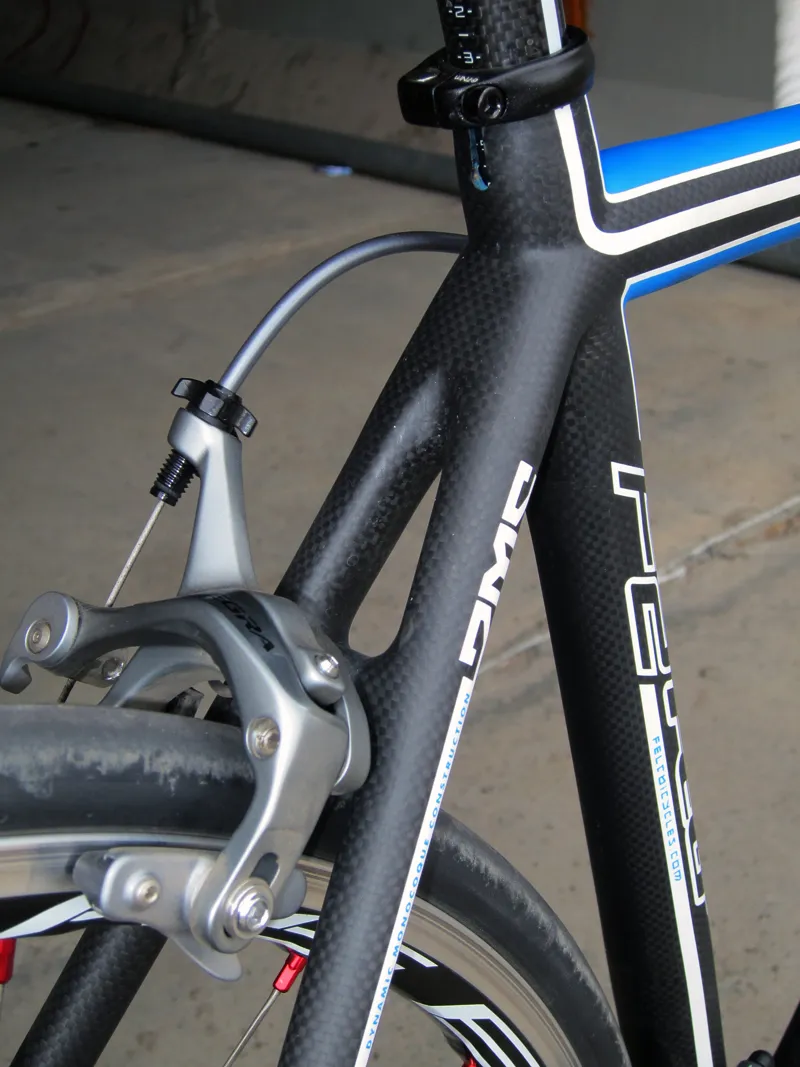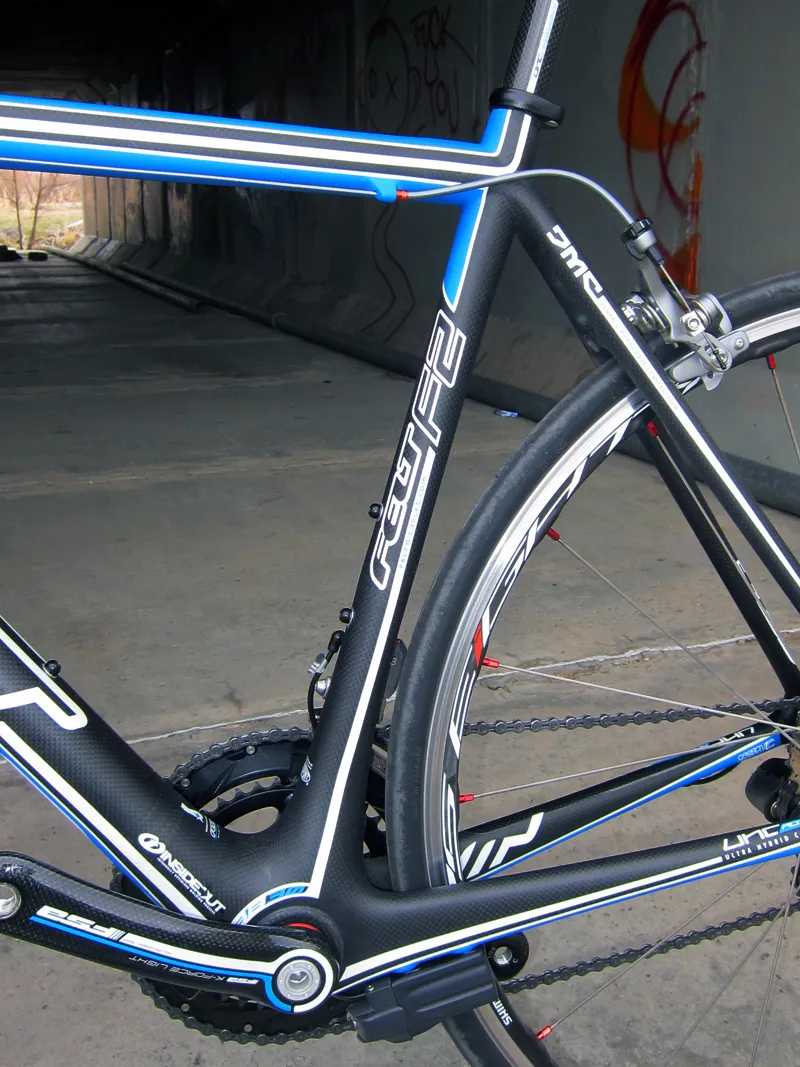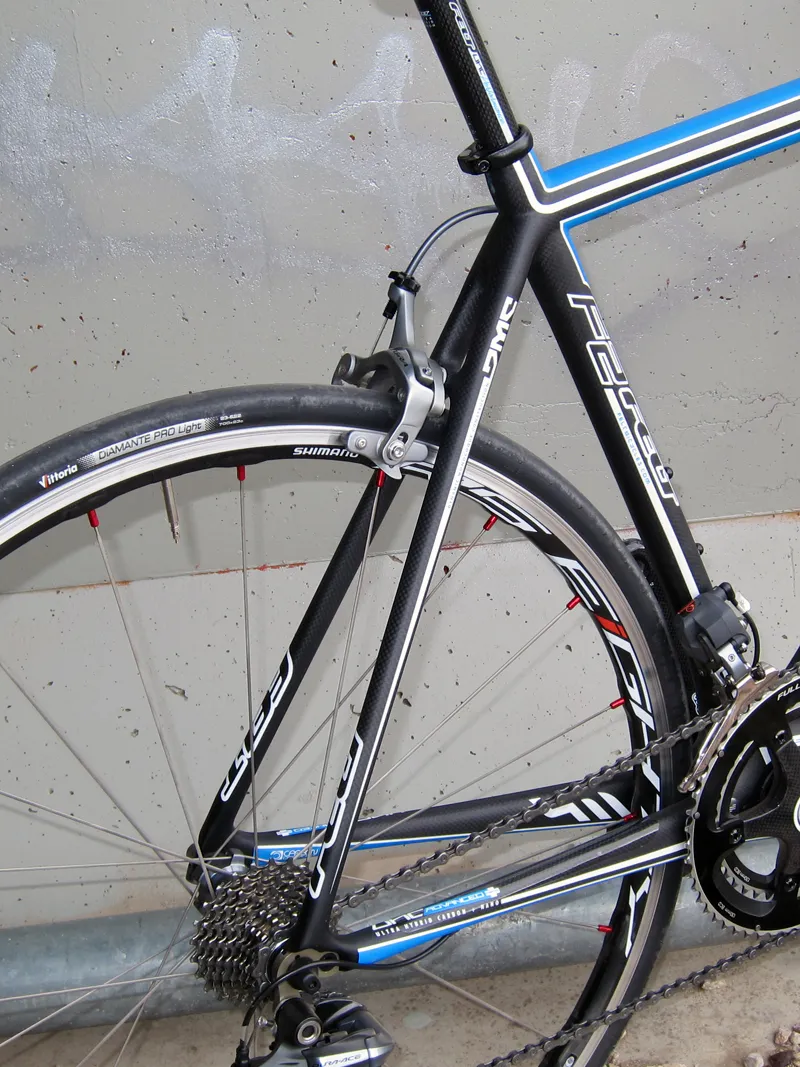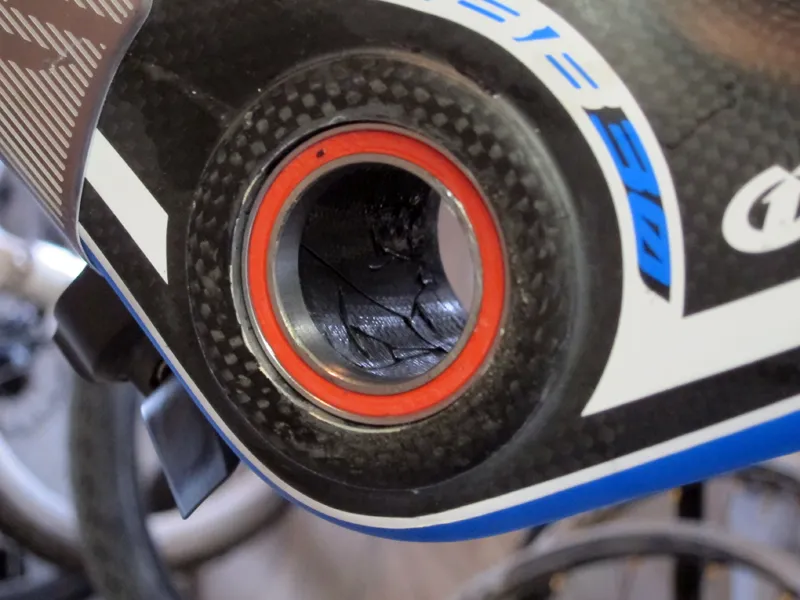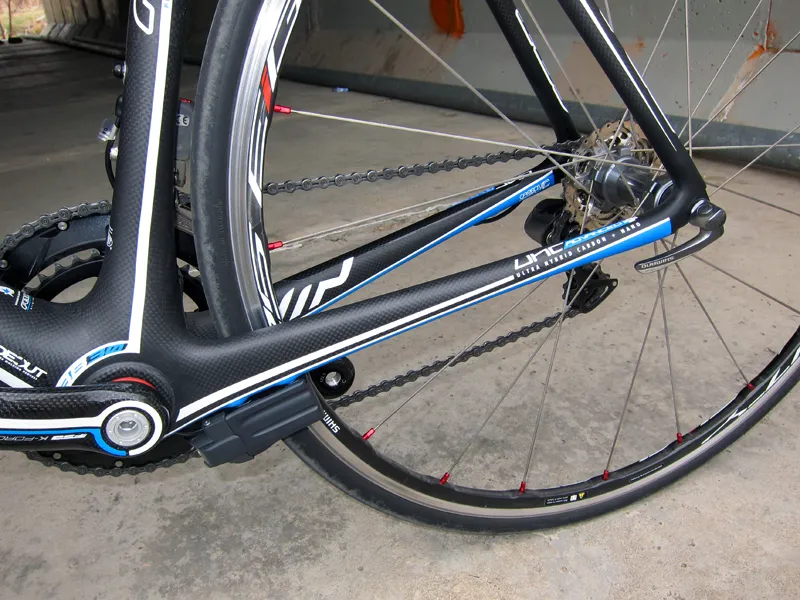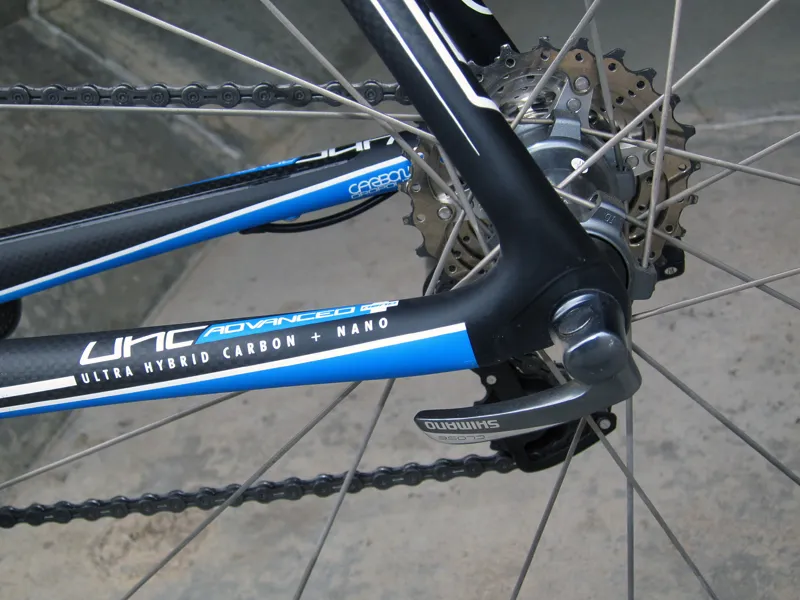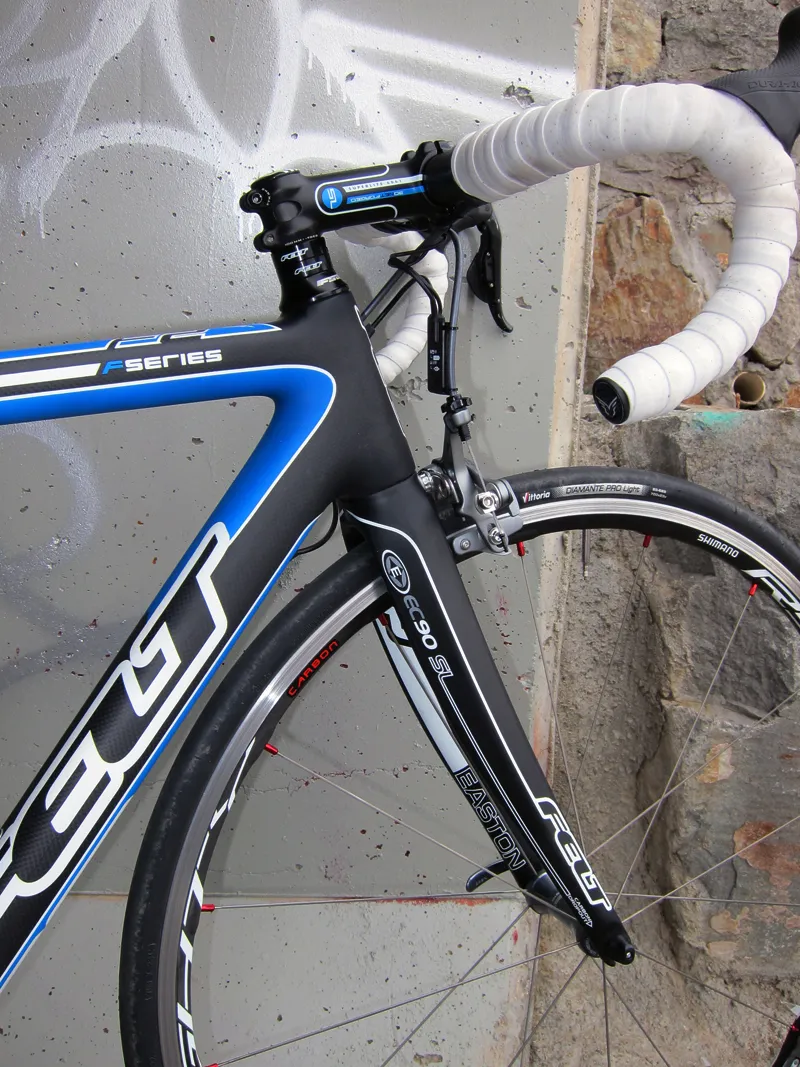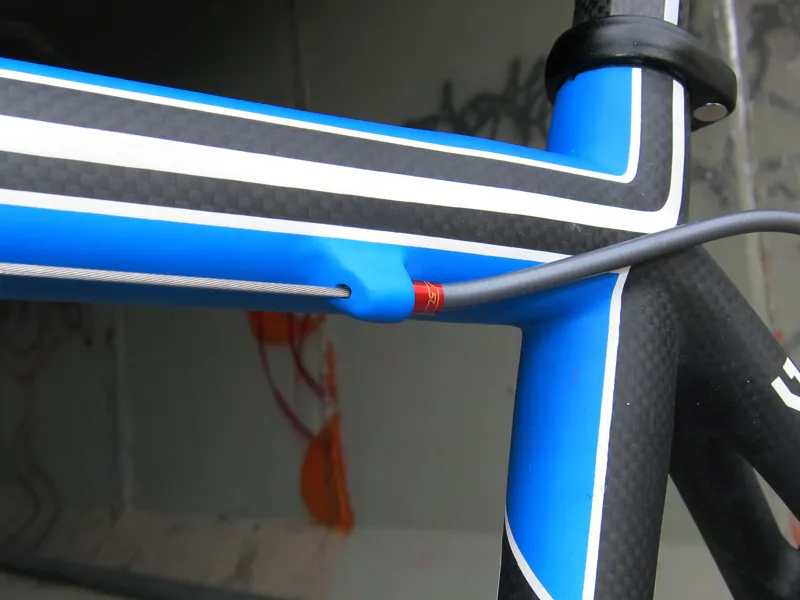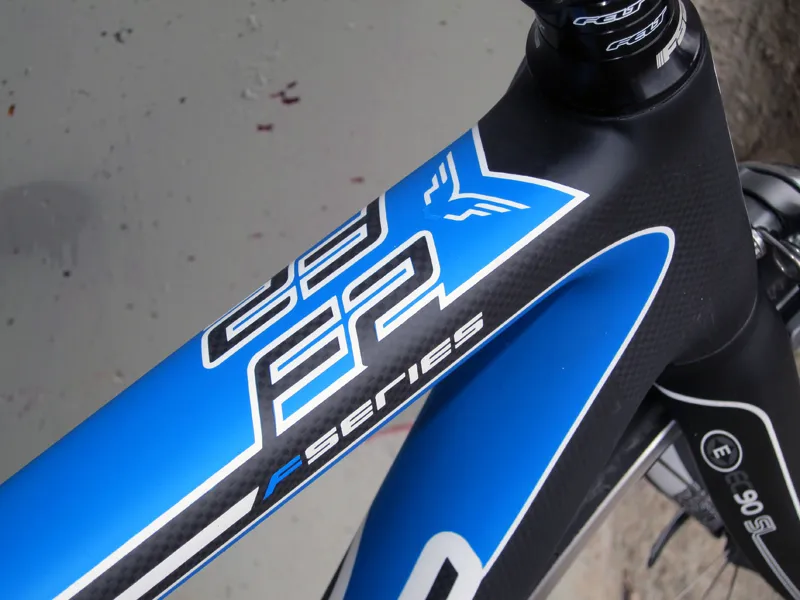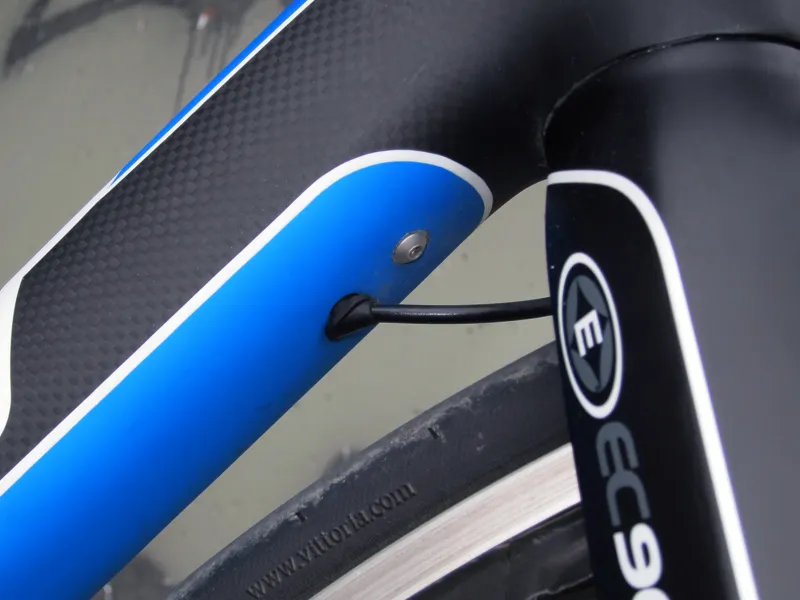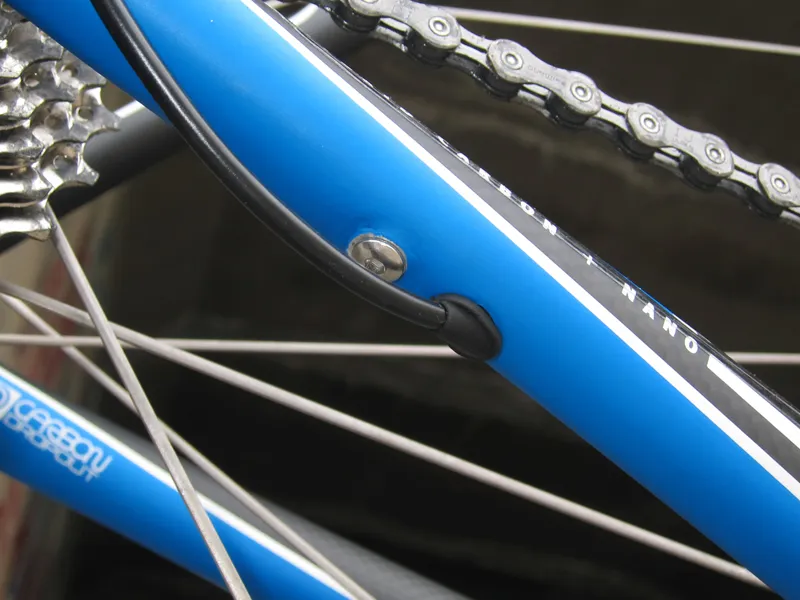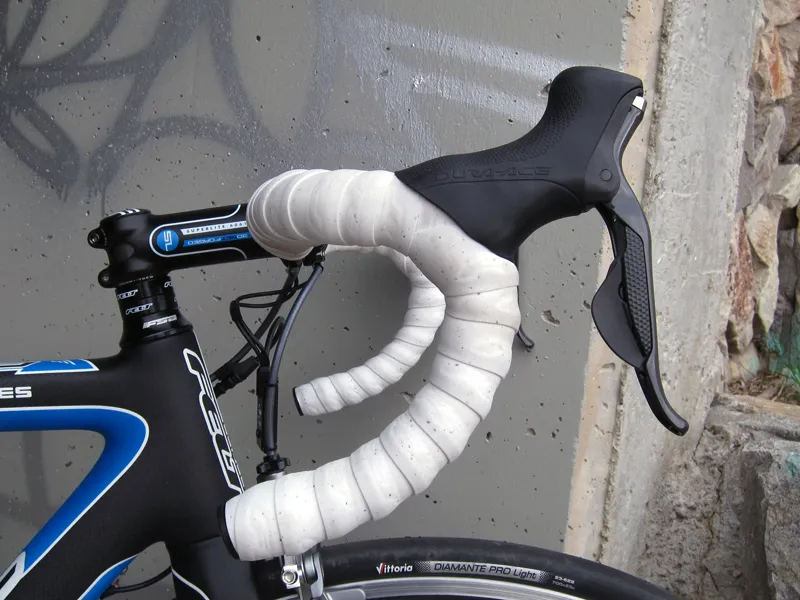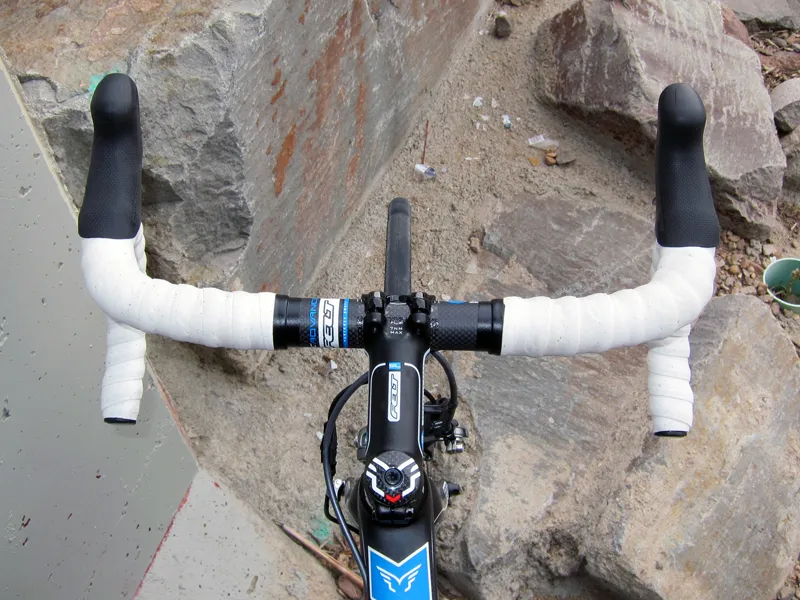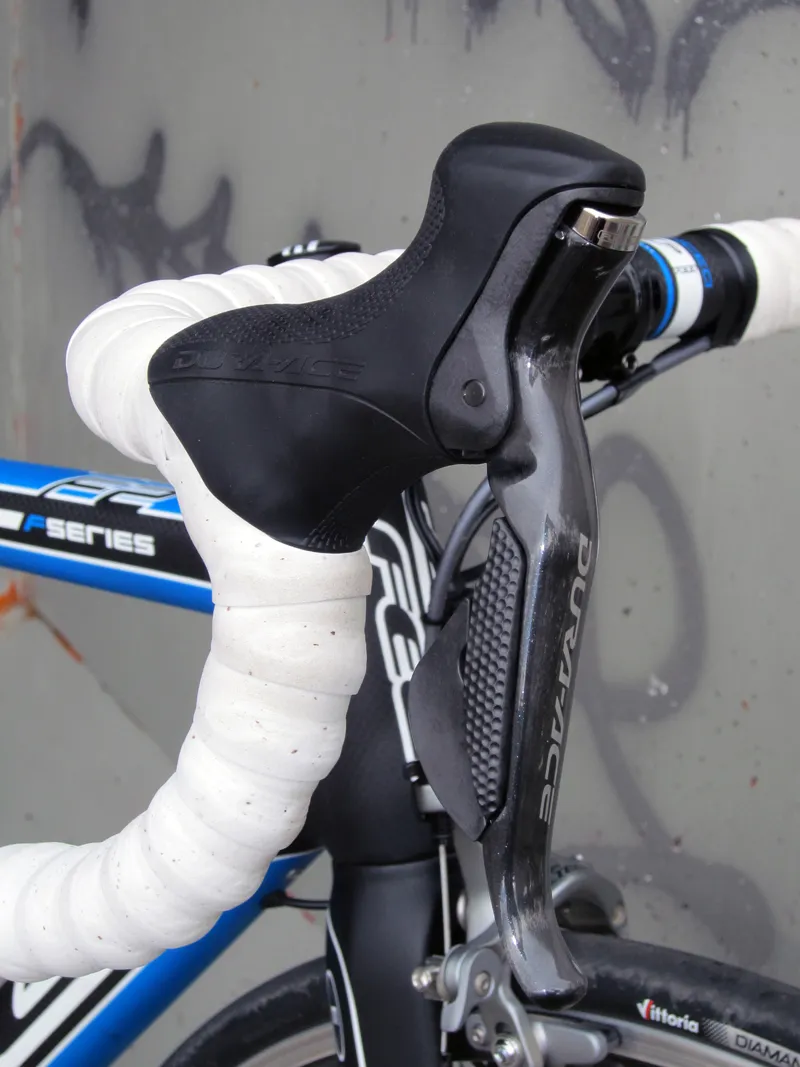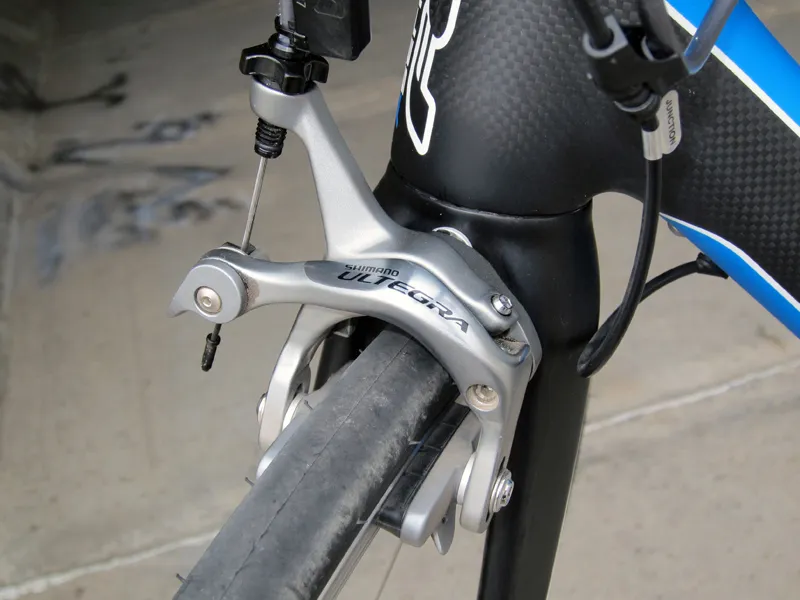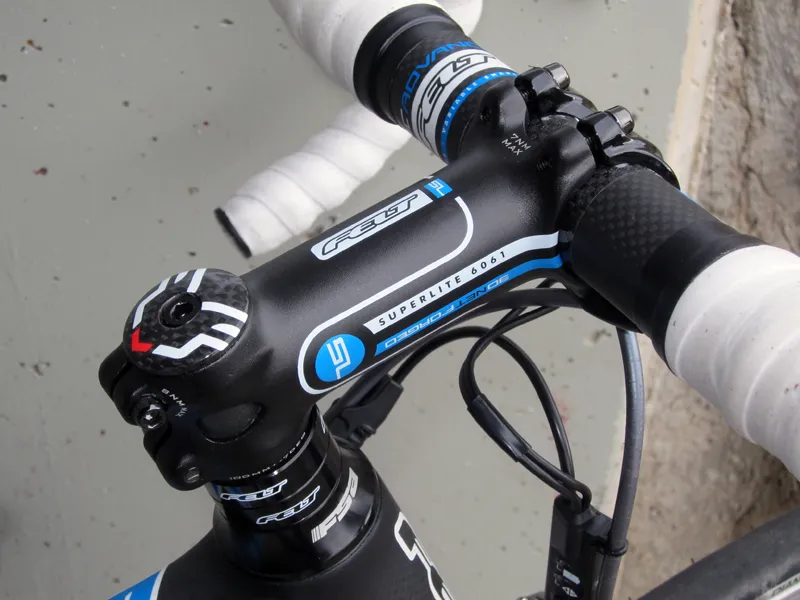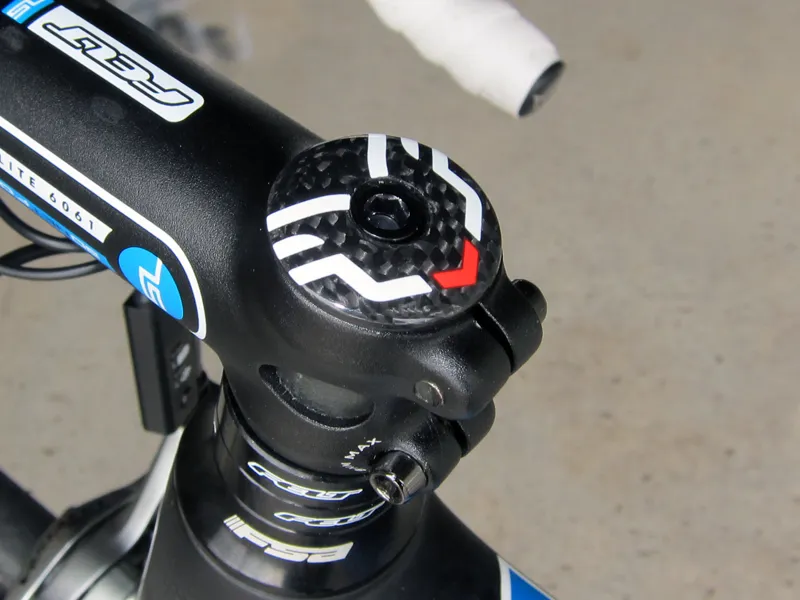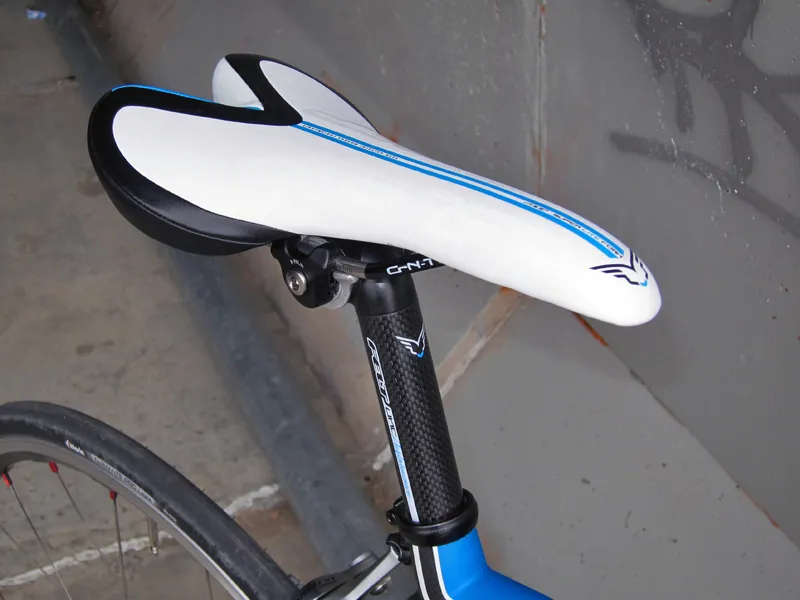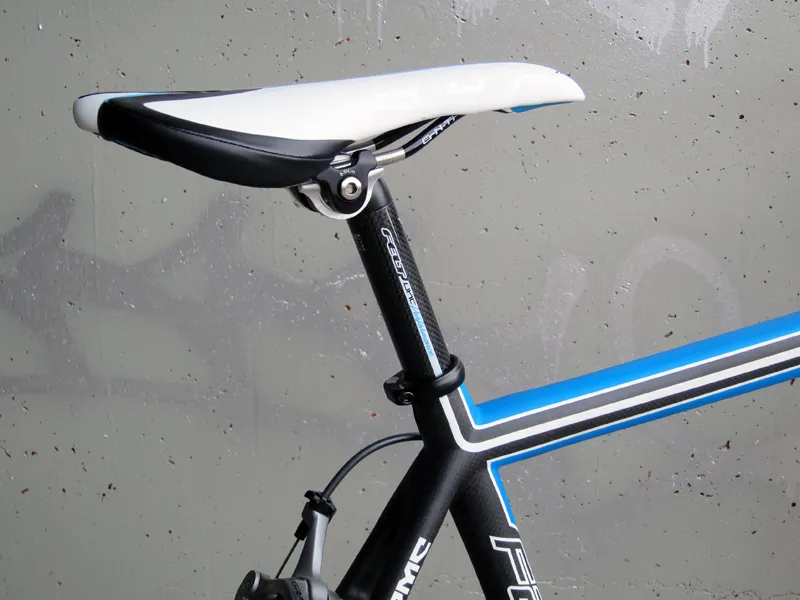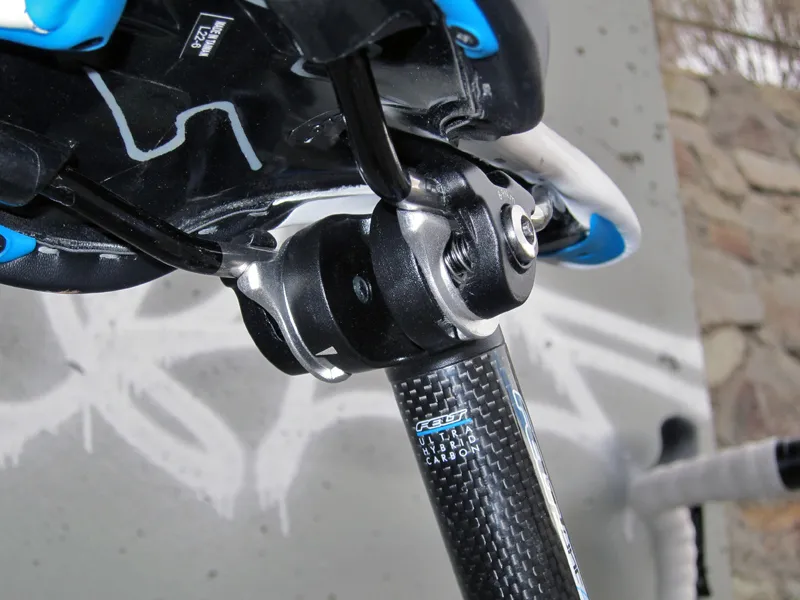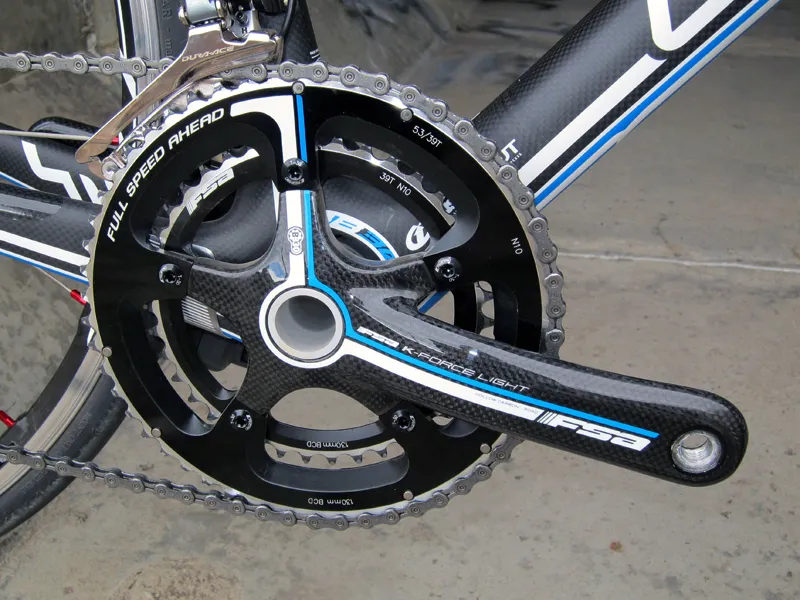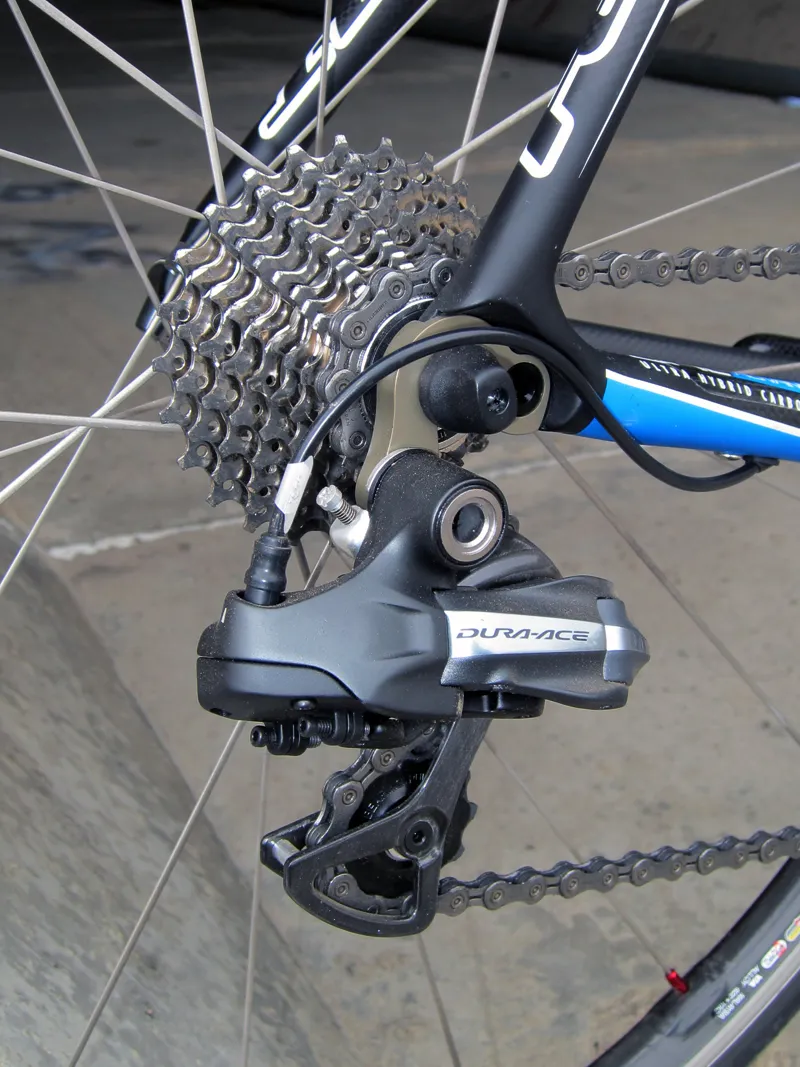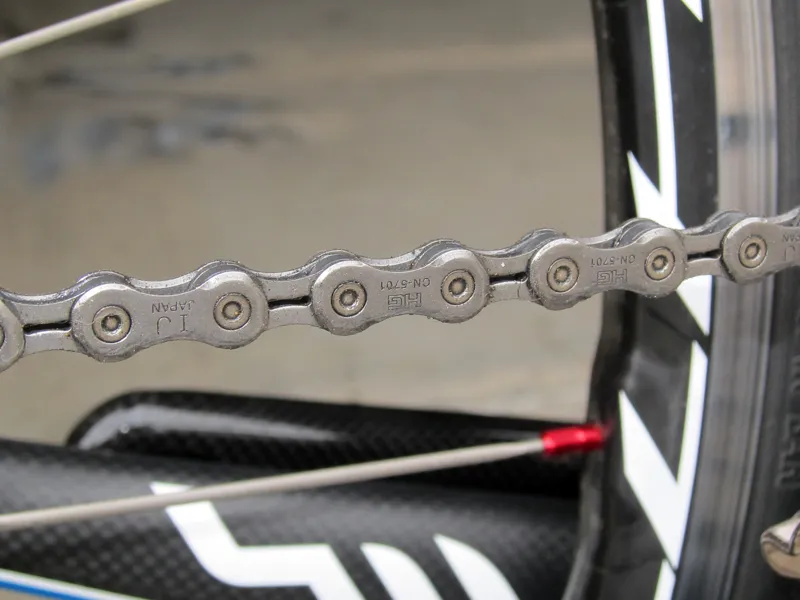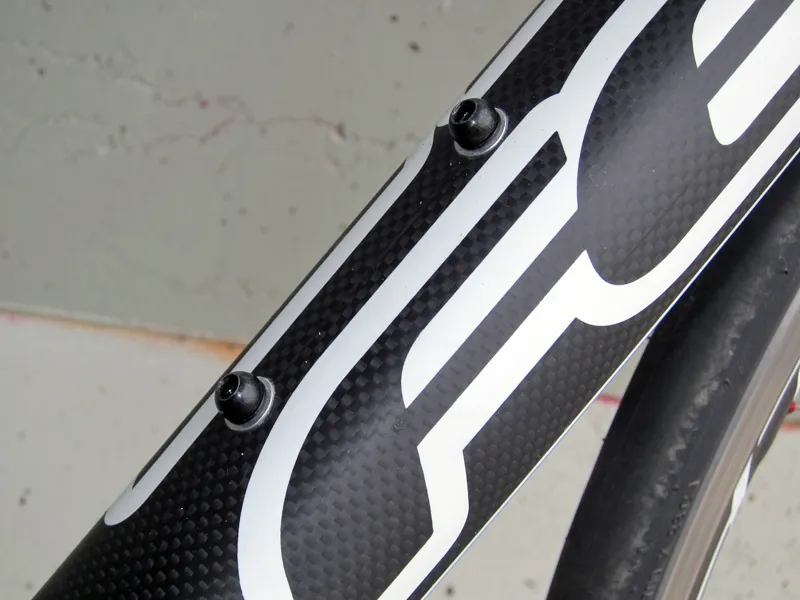The F2 is the second-tier model in Felt's revamped F-series of road bikes. The upgrades have been worth the wait, with enormous improvements in pedaling stiffness and handling precision while retaining – or even improving upon – the old flagship's comfort, weight, and ride quality. And, despite a rise in production costs, the F2 still represents surprisingly reasonable value relative to other Shimano Dura-Ace Di2-equipped bikes.
Ride & handling: Magical feel with rock-solid pedaling platform and quick steering
Felt claim a 15 percent jump in overall stiffness relative to the stout-but-heavy F1 Sprint and a whopping 45 percent improvement relative to the light-but-soft F1 SL chassis, but riders won't need any instruments to detect the changes. Especially as compared to the SL, the change is immediately tangible, with enormous gains in overall responsiveness to pedaling and steering inputs.
Whereas the old F was good but still a notable step or two behind companies like Cervélo, Canyon or Storck, this new model is well in keeping with that elite company in terms of stiffness-to-weight. Cruising along merely offers the suggestion of the F2's newly bolstered backbone but channel your efforts more acutely for a steep climb or sprint and there's little questioning the admirable chassis efficiency.
The front and rear ends are also very well balanced, with no obvious flex points or the unnerving sensations of disconnectedness that can sometimes plague flexier bikes at high speeds, especially in high-load corners. In fact, the F2 is so reassuringly predictable at speed that we were surprised to find we'd recorded nearly 80km/h (50mph) in a twisty section of on one of our regular test loops.
"Predictable" handling in this case doesn't equate to "lazy", though; in fact, the F2 is anything but. While the chassis doesn't wander off with a mind of its own when you're really turning the screws, you still have to pay keen attention as turn-in is very quick and crisp, with no delay from input to output – if you initiate a turn on this thing, you'd better mean it.
As compared to, say, a Trek Madone, the Felt doesn't settle into its arc quite as readily and sometimes seems to want to take corners tighter than you do, especially if you're expecting the bike to do the work for you. This isn't a bike where you can just fall asleep at the wheel and it's best to stay on your toes as the speeds climb. So it's predictable, yes, but predictably aggressive – enough that we wouldn't hesitate to use the F2 for an American-style crit race.
Ride quality, however, is truly magical with a gloriously lively, springy and resilient glide on anything from glass-smooth highways to gravel backroads. Road buzz is very well filtered between the tires and the rider contact points but not so much that it's overly isolating or lacking in communication. Cervélo's R-series frames and Canyon's Ultimate CF SLX – or even the old F1 SL – still hold an advantage on bigger impacts like potholes but unless your roads are especially poorly maintained, most riders should find the F2's ride quality to be utterly sublime.
Bottom line: the new F frame is such an improvement over the old one that we'd rather take a new F5 with lesser parts than a used F1 with a top-end build kit – there's simply no comparison between the two.
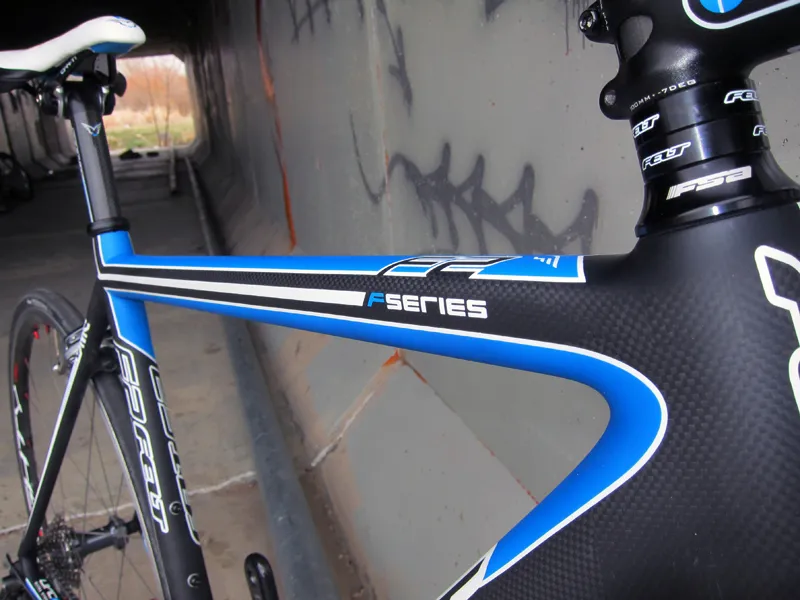
Frame: Bigger, lighter, smoother
Relative to the old F's more heavily massaged shape, with its array of angles and folds, the new F2 adopts a more organic form, with gently radiused joints, smoother lines throughout and no abrupt surface changes (Felt engineers found these to concentrate stresses under load). Overall tube dimensions have grown substantially, too, but wall thicknesses have decreased thanks to the use of rigid polyurethane internal molds that yield more consistent and precise compaction during the curing process with fewer voids and less excess material.
As expected, Felt have included a slew of modern technical features in this latest iteration of their bread-and-butter F: a tapered 1-1/8 to 1-1/2in head tube, a BB30-compatible bottom bracket (with a carbon sleeve instead of an aluminum one, no less), carbon fiber brake housing stops and carbon fiber dropouts. They stick with a conventional 27.2mm seatpost for easier packing and a more comfortable ride than most integrated setups, though.
Our tester came equipped with internal routing for the Shimano Dura-Ace Di2 electronic transmission but unlike some dedicated designs, the F2 is also convertible to external routing for mechanical setups. All of the holes serve double duty as either access ports for electronic wires or mechanical cables, or anchor points for the aluminum housing stops – brilliant, and elegant, too.
Felt had originally planned to pair the new F frame with their own full-carbon fork but alas, the company couldn't get it done in time and instead opted for Easton's tried-and-true EC90 SL. That model is a touch heavier than what Felt had planned at 350g with a 190mm steerer but that still puts it in the "very light" category. The frame, however, is truly superlight with a bare weight of just 900g (actual, 54cm size, with seatpost collar, rear derailleur hanger and water bottle bolts) – especially impressive when the remarkable stiffness is taken into account.
Equipment: Slick Di2 transmission and sweet riding wheels but a few cost-cutting downgrades
By no means does US$7,500 constitute an inexpensive bike but even so, the F2 is still one of the lowest priced Di2-equipped carbon road bikes from a major brand and the list of superlatives associated with Shimano's groundbreaking electronic transmission hasn't changed much since its introduction. Shifting is incredibly smooth, quiet and precise – especially up front or under load – and unlike even the best cable-actuated systems, it stays that way regardless of weather, mileage, or maintenance.
Ergonomics on Shimano's Di2 Dual Control levers are more refined than on the equivalent mechanical Dura-Ace levers, too, and while we still wish for multi-shift capability and more tactile feedback when pressing the buttons, there's little arguing with how well the system works overall. Despite early fears, battery life simply isn't an issue unless you're the type of person who goes years in between oil changes in your car. Most users will likely only have to charge the battery two or three times per season.
Felt eschew the aero trend in wheels for the F2, opting instead for Shimano carbon-and-aluminum RS80 clinchers. Though perhaps not as speedy as some more race-oriented choices, the RS80s' feathery 380g (claimed) rims, excellent torsional stiffness and reasonable overall weight spin up quickly and offer up a lusciously smooth ride. High thread count Vittoria Diamante Pro Light tires add further to the supple feel and deliver good cornering grip, though they're prone to cuts.
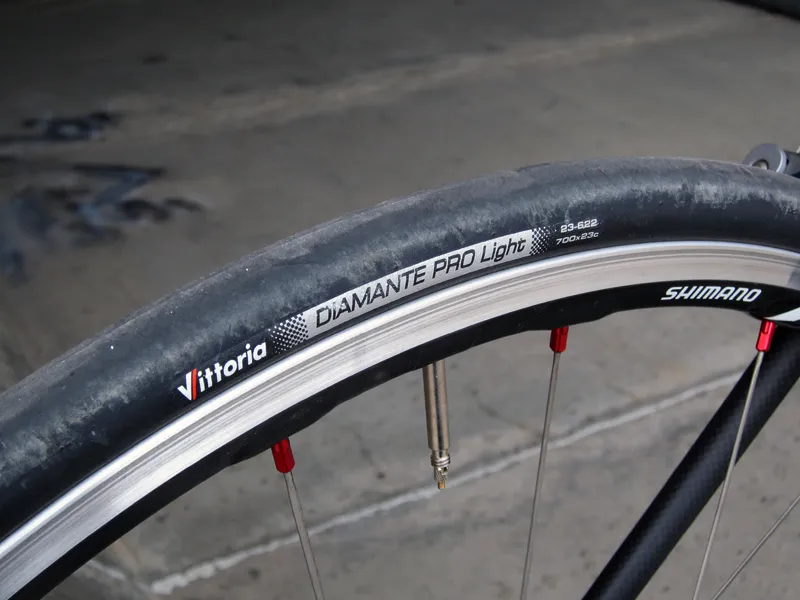
Felt product manager Dave Koesel did have to make some concessions to hit that price point, however, and the F2 isn't a full Dura-Ace Di2 rig. The brake calipers come from Shimano's Ultegra range, the chain and cassette belong to the 105 family, and FSA supply their K-Force Light BB30 hollow carbon fiber crankset.
That all being said, we wouldn't consider the K-Force Light cranks to be a downgrade as they're impressively feathery and stiff. The thick chainrings also shift well and Shimano still don't offer a proper BB30 crank option, anyway. As for the Ultegra and 105 bits, they're a little heavier than the equivalent Dura-Ace components but they're functionally identical so users won't notice any difference while in the saddle. The forged aluminum calipers bite and modulate just as well as the superb Dura-Ace stoppers and the shapes of the 105 cassette teeth and chain side plates are identical, too.
We took more issue with Felt's house-brand cockpit components, however. The forged aluminum stem was just fine, with suitable rigidity and a clean look, but the carbon bar feels much narrower than it is on account of the awkwardly shaped tops. The tops are also very big in diameter – especially when wrapped with chunky cork tape, as was our test bike – so check to make sure they agree with you before leaving the showroom floor.
The Felt saddle is light but the traditional shape places an inordinate amount of pressure on soft tissue. Fans of saddles like the Selle San Marco Concor Lite might get on just fine but for riders accustomed to more modern shapes like the Specialized Romin, consider the stock seat a write-off right from the get-go. Finally, the seatpost is perfectly functional but disappointingly clunky, with separate clamps and bolts for each rail and a chunky shape that protrudes past the sides of the saddle depending on your position. It's not especially elegant looking, either.
None of these largely personal preference items affects the overall performance of the bike, however, and relatively minor hiccups aside, the stock F2 isn't only still a wonderful bike to ride but it's also light at just 6.79kg (14.97lb) without pedals.
All in the family
Felt's new carbon F range comprises at least five different models depending on location, and while there are varying types of carbon fiber included and some variations to molding processes, all of them use the same exterior shape and share similar stiffness numbers, albeit with varying degrees of ride quality and weight.
"The F3, F4, F5 and our aftermarket FC frameset all use the exact same frame and material layup," said Koesel. "This frame still makes use of some of the InsideOut tech, but because the front triangle is molded in one piece we can't have every tube junction also use an internal mold; there wouldn’t be a way to get it out of the frame. The bond lines follow our traditional monocoque molds, with chainstays and seatstays getting bonded to the front triangle. This helps make the construction more affordable, but we keep the carbon dropouts and super-stiff performance."
According to Koesel, even the "entry-level" F5 frame is sub-1kg at just 924g for a 56cm sample and if the company's claims about shared performance numbers rings true, that makes that bike's $2,099 asking price a true bargain, especially with the competent Shimano 105 and FSA Gossamer bits, and reasonable-looking Mavic wheels. While the F2 described here may not fall within your budget, chances are one of the other F bikes does and we'd be hard pressed to imagine you'd be disappointed in your purchase. Well done, Felt, well done.
